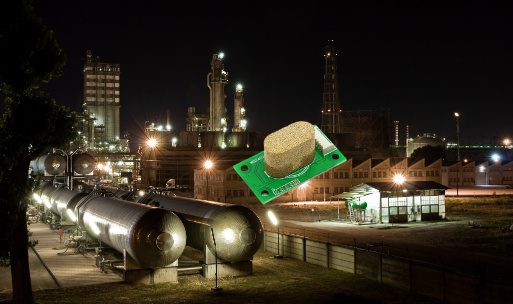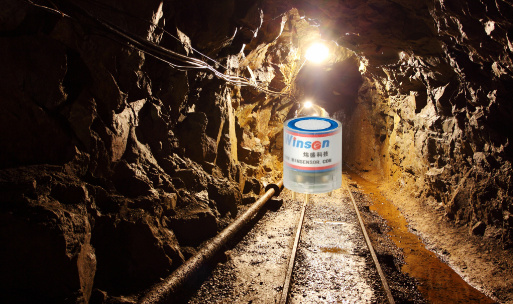Catalytic Bead Hydrogen Sensors: Principles, Features, and Applications
Introduction
As the use of hydrogen expands in industries such as energy, transportation, and manufacturing, so too does the need for reliable gas detection technologies. Among the most robust and widely used technologies for detecting hydrogen gas in flammable concentrations is the Catalytic Bead Hydrogen Sensor.
Also known as a Catalytic Combustion Sensor or pellistor, this sensor type has long been favored for combustible gas detection due to its durability, simplicity, and cost-effectiveness. In this article, we will explore how catalytic bead hydrogen sensors work, their design, key benefits, limitations, and how they compare to other hydrogen detection technologies.
What Is a Catalytic Bead Hydrogen Sensor?
A Catalytic Bead Hydrogen Sensor is a type of flammable gas sensor that detects the presence of hydrogen by catalyzing its combustion on a heated surface. The heat generated from this combustion causes a change in the resistance of the sensing element, which is then converted into an electrical signal proportional to the hydrogen concentration.
.jpg)
These sensors are suitable for detecting hydrogen in the Lower Explosive Limit (LEL) range, making them ideal for safety monitoring in potentially hazardous environments.
Working Principle of Catalytic Bead Hydrogen Sensors
Catalytic bead sensors operate based on the principle of catalytic oxidation and temperature-dependent resistance change. The sensor typically consists of two tiny coils of platinum wire embedded in ceramic beads:
- Active Bead (sensing element): Coated with a catalytic material such as platinum or palladium.
- Reference Bead (inactive element): Not coated with a catalyst, used for baseline comparison.
How It Works
- The sensor is electrically heated, raising the temperature of both beads to a few hundred degrees Celsius.
- When hydrogen gas is present, it reacts with oxygen on the active bead’s catalytic surface, producing heat.
- The additional heat causes the resistance of the active bead to increase.
- The reference bead does not participate in the reaction, so its resistance remains unchanged.
- The difference in resistance between the two beads is measured and translated into a gas concentration value.
Key Features of Catalytic Bead Hydrogen Sensors
| Feature | Description |
|---|---|
| Target Gas | Hydrogen (H₂) and other flammable gases |
| Detection Range | Typically 0–100% LEL (Lower Explosive Limit) |
| Operating Temperature | –40°C to +70°C |
| Humidity Range | 0–95% RH, non-condensing |
| Response Time (T90) | <10 seconds in most models |
| Signal Output | mV, 4–20 mA, or digital via transmitter |
| Power Consumption | Moderate (due to heating element) |
| Explosion-proof | Often certified for use in hazardous environments |
Advantages of Catalytic Bead Hydrogen Sensors
Proven Technology
Used for decades in oil refineries, chemical plants, and mining operations.
Fast Response Time
Typically under 10 seconds, enabling quick leak detection.
Wide Gas Compatibility
Can detect a wide range of flammable gases besides hydrogen.
Cost-Effective
Affordable for large-scale deployment in industrial settings.
Rugged and Reliable
Works well in demanding environments including high temperatures and vibration.
Limitations of Catalytic Bead Hydrogen Sensors
While robust, catalytic bead sensors are not without drawbacks:
- Oxygen Dependency: Requires oxygen to catalyze combustion.
- Poisoning Sensitivity: Can be deactivated by exposure to silicone vapors, sulfur compounds, lead, and chlorinated solvents.
- Limited Low-ppm Detection: Not ideal for applications requiring ppm-level hydrogen detection (e.g., medical or environmental).
- Higher Power Use: Heating elements require constant power.
Applications of Catalytic Bead Hydrogen Sensors
These sensors are primarily used in environments where explosion prevention is the primary goal:
1. Hydrogen Storage Facilities
To monitor hydrogen concentrations near tanks or pipelines to prevent leaks or explosions.
2. Battery Rooms
Hydrogen gas is produced during charging of lead-acid and lithium-ion batteries. Catalytic sensors detect flammable concentrations.
3. Hydrogen Fueling Stations
Monitors the ambient hydrogen concentration to ensure safety during dispensing and storage.
4. Refineries and Petrochemical Plants
Used for hydrogen and hydrocarbon leak detection in potentially explosive environments.
5. Industrial Gas Production
Detects hydrogen during manufacturing and handling in gas plants.
Sensor Design and Construction
Catalytic Bead Construction
- Active Bead: Coated with catalyst to oxidize hydrogen.
- Reference Bead: Uncoated to compensate for environmental variations.
- Wheatstone Bridge: The two beads are connected in a bridge circuit to amplify the difference in resistance.
- Encapsulation: Typically sealed in a flameproof housing (e.g., stainless steel mesh or sintered metal) for safety.
Housing and Certifications
Most catalytic hydrogen sensors are built to comply with hazardous location standards such as:
- ATEX (Europe)
- IECEx (International)
- UL/CSA (North America)
- GB/T standards (China)
Performance Comparison
| Sensor Type | Sensitivity Range | Power Usage | Response Time | Interference Resistance | Best Use Case |
|---|---|---|---|---|---|
| Catalytic Bead | 0–100% LEL | Moderate | <10 sec | Prone to poisoning | Explosion prevention in industrial sites |
| Electrochemical | ppm to % | Low | 10–60 sec | High | Battery rooms, safety monitoring |
| MOS (Semiconductor) | 10 ppm to % | High | 30–120 sec | Low | Consumer alarms, ambient sensing |
| Thermal Conductivity | % levels | Low | Moderate | Moderate | Gas purity, leak detection |
Calibration and Maintenance
Calibration Interval
Every 3 to 6 months using certified gas mixtures.
Maintenance Tips
- Replace sensors after exposure to poisons.
- Inspect flame arrestor for contamination or blockage.
- Regularly test alarms and control systems connected to sensors.
- Ensure sufficient oxygen in the atmosphere for combustion-based detection.
Common Products and Models

| Target: | H2 Hydrogen |
| Model: | ZC601 |
| Detection range: | 0~40000ppm (0-100%LEL) |
| Characteristics: | Short preheating time, fast response speed |
| Output signal: | Analog signal/UART |
| Response time: | ≤2S |
ZC601 Manual download
Get Price Whatsapp
FAQs About Catalytic Bead Hydrogen Sensors
Q1: Can catalytic bead sensors detect hydrogen in oxygen-deficient environments?
No. These sensors require a minimum oxygen level (usually >10%) to catalyze the hydrogen oxidation reaction.
Q2: What gases can poison a catalytic bead sensor?
Common poisons include:
- Silicone vapors
- Sulfur dioxide (SO₂)
- Lead-containing aerosols
- Chlorinated hydrocarbons
Q3: How do I protect a sensor from poisoning?
Use hydrophobic filters, avoid using contaminated cleaning materials nearby, and install sensors away from process vents.
Q4: What’s the shelf life of a catalytic bead sensor?
When stored in sealed packaging under dry conditions, the shelf life is typically 1–2 years.
Q5: Is it possible to use catalytic sensors outdoors?
Yes, with weatherproof housing and consideration for temperature/humidity effects.
Conclusion
Catalytic bead hydrogen sensors are essential tools for detecting flammable concentrations of hydrogen in industrial and hazardous environments. Their robust design, fast response, and high reliability make them a trusted choice for explosion prevention and workplace safety.
While they are not ideal for low-ppm detection or oxygen-deficient environments, they continue to play a crucial role in hydrogen safety systems worldwide. When selecting a hydrogen sensor, consider the specific concentration range, operating conditions, and detection goals to determine whether a catalytic bead type is suitable for your application.






